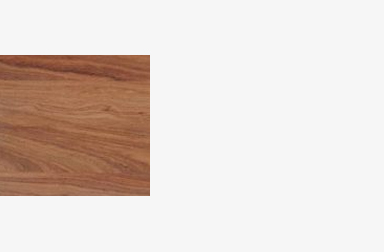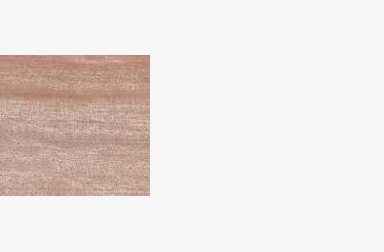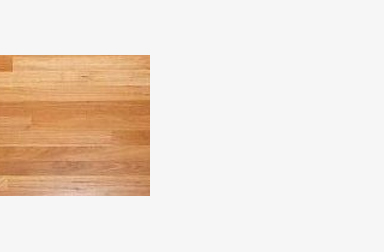
Colour: Varies from grey/brown to pink/brown to orange/brown.
Durability: Not durable – Only suitable for internal applications.
Applications: Door & window frames, flooring, furniture, staircases & mouldings.
This tree produces the “durian fruit”. Once the tree stops bearing fruit it is harvested for its timber.

Botanical Name: Eucalyptus Marginate
Jarrah is a large hardwood growing in the South-West corner of Western Australia and it’s appearance varies from rich reds to deep browns, with sapwood being a clearly distinguished pale yellow. The texture is course and generally straight grained although some interlocked grain may feature.
Jarrah is one of the few commercial species from Western Australia. Jarrah is renowned world-wide for its density, resistance to insect attack and beautiful rich red colour which deepens over time into a soft burgundy.
Jarrah’s beautiful colouring and exceptional hardness are a perfect combination for commercial and residential flooring. The common uses for Jarrah is decks, flooring, joinery, panelling, heavy construction, domestic structural framing.
The hardness is 8.5 and Durability is above Ground Class 2.

Botanical Name: Intsia bijuga or Intsia palembanica
Is a very hardy and resistant tropical hardwood. Kwila is a tropical hardwood which is found in South-east Asia, the Philippines, Solomon Islands, Fiji and Papua New Guinea. It can also be found in the northern tropical regions of Australia.
Kwila’s natural stability and unparalleled resistance to splitting provides for a very high quality finish of exceptional durability which can remain permanently outdoors in all types of harsh climates and weather conditions.
It has a average Hardness Rating – Dry: Hard. The Australian Department of Primary Industries has given Kwila timber a Rating One, which is the highest standard of suitability for outdoor timber furniture.
Kwila is often the material of choice for decking and other outdoor applications, as it will withstand even the harshest Australian weather conditions.
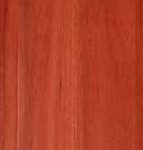
Botanical Name: Eucalyptus saligna
Sydney Blue Gum is a tall tree, found along the New South Wales coastline extending from Batemans Bay in the south to southern Queensland. The tree gets its name from both its prevalence around the city of Sydney and the sometimes bluish appearance of its bark.
The tree can grow to a height of more than 60 metres with some examples attaining heights in excess of 70 metres. The trunk is generally straight and typically free of branches on its lower half to two thirds. The species has also been grown extensively in plantations in South Africa.
The tree grows extremely rapidly in those conditions, with the resultant timber being of a much lower density (500-600kg/m3) than the mature Australian material. The timber is usually straight grained with a small percentage showing some interlocking grain. The texture is moderately coarse. The heartwood colour ranges from dark pink to reddish brown.
The timber is easy to work, fix and dress and has been extensively used in a variety of both structural and appearance applications, including flooring, joinery, furniture, domestic and commercial construction, cladding, panelling and boat building.
The heartwood is moderately durable Class 3.

Botanical Name: Pinus radiate
Radiata pine, formerly referred to as Monterey pine or insignis pine, is a large softwood native to a very limited area of the west coast of North America but planted widely in the world’s south temperate zone, especially in South Africa, Chile, New Zealand and Australia.
In Western Australia, major plantations have been established in the south-west on fertile soil and in rainfall areas greater than 700 mm, but preferably south of Perth because further north the thin bark makes the species susceptible to sunscald.
The timber is particularly useful: it can be readily sawn, peeled, or converted to pulp, has good nail-holding power, works well, can be easily stained, and when treated with preservatives, is suitable for long-life applications in the ground.
Most common uses are General construction, flooring, panelling, furniture, joinery, plywood, particleboard, fibreboard, paper.
It’s appearance is a pale yellow-brown. Durability class 4.
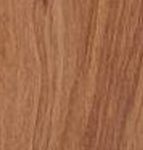
Botanical Name: Eucalyptus Sideroxylon
Red Ironbark is extremely hard. Its colour varies from pale to rich reds as well as browns. The grain is usually interlocked, with a moderately coarse texture. A medium to large hardwood growing mainly in the North Central Victoria, the inland slopes of New South Wales, and occasionally in the coastal districts of Victoria, New South Wales and Queensland.
The most common uses are Flooring, Decking Engineering Construction, Poles and Sleepers. Red Ironbark is durability class 1 for both above and in-ground contact. It has a narrow band of sapwood that is resistant to lyctus attack and hardness is 13.

Botanical Name: (Pometia spp. mostly P. Pinnata ‐ Sapindaceae) also known as Akwa, Taun or Pometia
Pacific Maple is the common trading name for a number of S.E.Asian hardwoods marketed in Australia. It’s appearance is a Pinkish brown to pale reddish brown.
This is a medium hard wood suitable for all types of furniture.
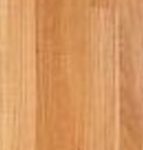
Botanical Name: Eucalyptus pilularis
Blackbutt is a commonly grown hardwood that has attractive colouring from cream/golden yellow to pale brown, sometimes with a slight tinge of pink. Its grain is usually straight and texture its medium and even.
Blackbutt is a native Australian hardwood timber found in New South Wales and Southern Queensland, it comes from a fast growing tree making it a good plantation timber. It’s a popular timber within the building industry and widely used for construction purposes like building timber decks, pergolas carports and any other outdoor timber structure’s.
It is a class 1 timber above ground, making it extremely durable with a life expectancy of over 40 years, it should still be oiled for extended life. In ground Black butt’s life expectancy is 15-25 years making it a class 2 timber.
Blackbutt has great resistance to weather rot, termites, borers, insect infestation and fungi and it also has good fire resistance making it a suitable decking timber for bush fire prone areas.(Minimum thickness has to be 18mm, check for further details with the Building Commission). This timber has a rating of 9.1 and durability above ground is Class1. This timber is most commonly used for flooring, decking, cladding, and benchtops.

Botanical Name: Araucaria cunninghamii
Other Common Names: Colonial Pine, Queensland Pine
Occurs naturally in drier rainforests from Hastings River, New South Wales, to Far North Queensland and as far inland as 300 km in some places. It is also grown in plantations, mainly in southern Queensland. Outside Australia it extends to Papua New Guinea.
Hoop Pine is a straight grained wood, evenly textured and very fine. The growth rings are not distinct, but they are visible, and the figure is mottled and plain. The heartwood ranges from light yellow brown to pale cream, and although there is little difference in colour between the heartwood and the sapwood, the heartwood is a little darker. Sapwood 7.5 – 15mm wide is often flecked and light brown in colour.
Hoop Pine glues well and can be painted, stained and polished easily. It machines and turns well, but is not suitable for steam bending. It can be used with standard fittings and fastenings. Hoop Pine is a Queensland timber whose ease of use has made it popular for general construction purposes, flooring, joinery, shelving and cupboards, furniture, and plywood. When treated with preservatives it is suitable for outdoor uses such as fencing, pergolas, landscaping and retaining walls.

Botanical Name: Synoum Glandulosum
Other Names: Linggoa, Sena, Amboyna, Angsana, Narra, Padauk
Rosewood is a hardwood whose attractive colour has made it popular.
A small to medium hardwood of the coastal rainforests between Milton in New South Wales and Bundaberg in Queensland. It is also a hardwood native to South-East Asia, Papua New Guinea, the Solomon Islands, Sabah, Philippines, Indonesia and Malaysia. Its appearance is a Reddish Brown, similar to Rose Mahogany.
Suitable for high quality furniture and cabinet work. Also suitable for flooring, finely turned articles, gun stocks, rifle butts and decorative sliced veneer. It is prized for carving local artefacts and in making ceremonial hand drums. It has good acoustic and tonal qualities, making it suitable for musical instruments. This timber is very durable.
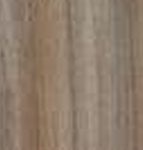
Botanical Name: Eucalyptus, Corymbia maculata, Corymbia citiodora, Corymbia henryi
Other Common Name: Lemon-Scented Gum
Spotted Gum is one of Australia’s premium native hardwoods with a striking appearance and a high degree of natural durability and strength, making it an ideal timber for a variety of structural, exterior and interior applications. Architects and designers throughout the world value Spotted Gum timbers for their back-sawn grain structure, attractive markings and vibrant colour palette.
Spotted Gum is the common name for four species that grow along the east coast of Australia, from northeast Victoria to the northern tablelands of Queensland, with some occurrence in western areas of southern Queensland. Sawn timber from these species is generally available throughout Australia. These species have straight, slender trunks with smooth bark that is shed in patches, giving the trees their characteristic spotted appearance.
This timber ranges from light through to dark browns with green and orange tones, and wild figure (grain pattern) and fiddleback is common. The durability above ground is Class 1 and hardness is 11.
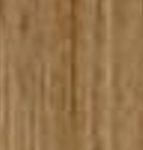
Botanical Name: Eucalyptus Delegatensis / Eucalyptus Regnans / Eucalyptus Obliqua plus others
Other common names: Australian Ash
This timber main source is Tasmania, Victoria & New South Wales. Tasmanian Oak is light in colour, varying from straw to reddish brown with intermediate shades of cream to pink. It is recognised for its excellent staining qualities, which allow ready matching with other timbers, finishes or furnishings. It is a versatile timber perfect for flooring, panelling, architraves, skirtings, window reveals, cupboard doors and stairs.
Tasmanian Oak is the name used for three almost identical species of eucalypt hardwoods that are normally marketed collectively. E.delegatensis grows at higher altitudes, while E. regnans is found in
wetter sites. E. obliqua has a wide distribution, occurring in wet forests but also extending into drier areas. The name Tasmanian Oak was originally used by early European timber workers who believed the eucalypts showed the same strength as English Oak.
Durability description: Termite resistance of heartwood: Not resistant. When used for exterior applications it should be painted or given a protective coating. Natural durability ratings in ground is Class 4 and outside above ground Class 3. Its hardness is a 4 to 5.

Botanical Name: Eucalyptus drepanophylla, E. paniculata
Other Names: white ironbark, narrow-leaved ironbark
Grey Ironbark is the pinnacle of versatile Australian hardwoods. It was originally highly prized for it’s immense strength and natural durability. This timber Source/Origin: Victoria through to QLD.
The appearance ranges from pale brown to dark brown with occasional rich, red tones. And its grain is usually tight and straight. This versatility has seen it expand into a new, limitless range of applications including cladding, flooring, decking and joinery products as well as feature posts and beams
Polishing beautifully, always ensuring a smooth finish, Grey Ironbark is a popular choice for many architects, designers and builders. The incredible strength (Hardness 14) and durability (Above Ground Class 1) of Grey Ironbark has resulted in it becoming the top choice for exterior applications over the years. Today Grey Ironbark is also recognised for its rich, warm colouring and stunning patina, revealing its adaptability as an internal building material.






